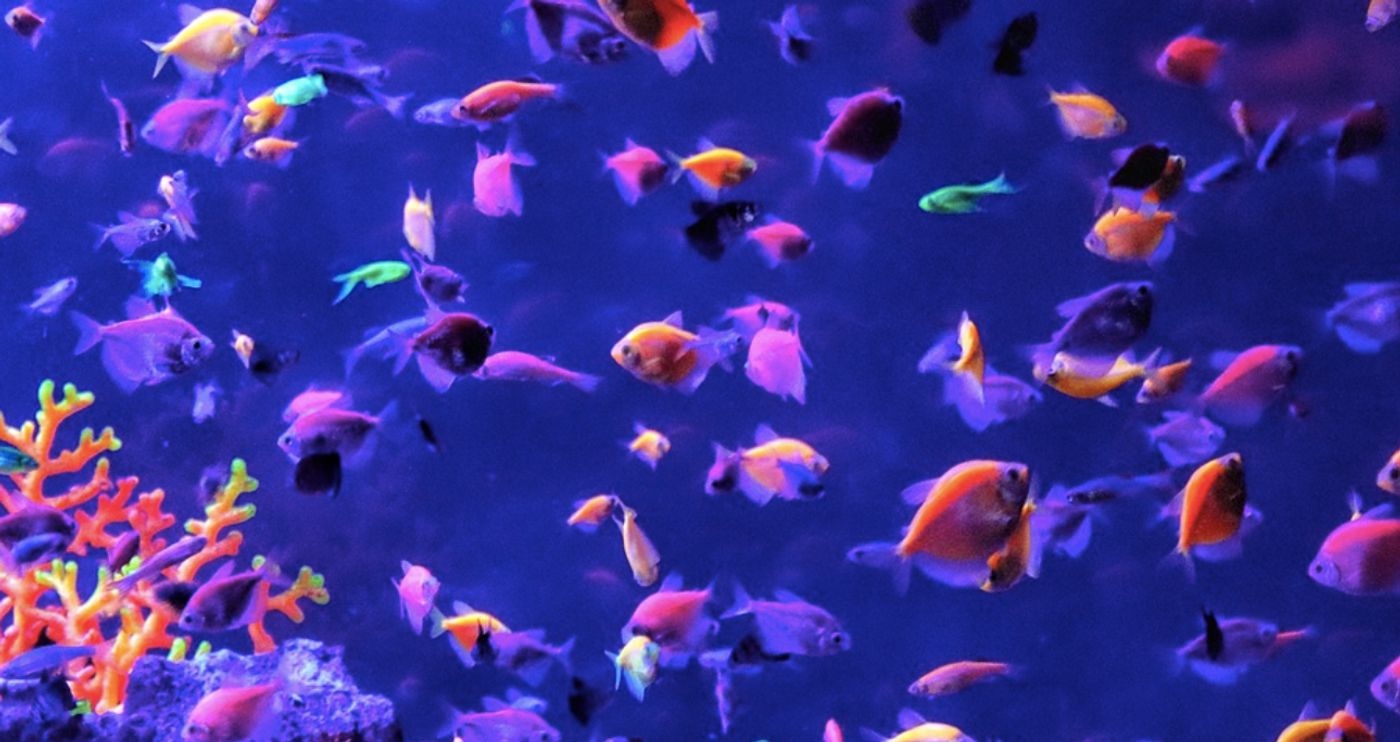Genetically Modified, Fluorescent Fish Escape Farms & Multiply in the Wild
Zebrafish are a great research model. They develop quickly and in their early stages, they remain transparent. The little fish are easy and inexpensive to raise and can reproduce more frequently and in far greater numbers than mice. They also have many genes in common with people, and can be genetically manipulated with many common tools including CRISPR. That has led to a proliferation of zebrafish lines and facilities. As a zebrafish researcher, I heard many jokes over the years about creating fun transgenic zebrafish, including glowing fish. As it turns out, that's an idea that many people had, and some actually made it a reality by producing and selling an animal called Glofish. But the outcome hasn't been so funny.
Now that fluorescent pets have been generated in farms for sale in pet stores, some animals have managed to make an escape. Genetically-modified zebrafish that glow red and green have been found in the wild in creeks in the Atlantic Forest after getting out of their farms in southeastern Brazil. These findings have been reported in Studies on Neotropical Fauna and Environment and highlighted by Science News. Now some scientists are alarmed that the native fauna may be threatened by these invasive fish, which could establish themselves and become entrenched.
Ecologist Jean Vitule at the Federal University of Paraná, Curitiba, who was not part of the research team nevertheless noted to Science that the matter is a "serious" one, and that native fish might breed with the invaders and become more visible to predators, for example.
Some states like California and even the country of Brazil knew this possibility could threaten local wildlife, and banned the sale of Glofish. In 2014, a Glofish was spotted in canals near ornamental fish farms in the region of Tampa Bay, Florida. There, other predator fish nearby probably consumed it before it was able to reproduce, scientists have speculated.
The placid creeks of Brazil have been more hospitable, it seems. André Magalhães, a biologist with the Federal University of São João del-Rei noted that clusters of glowing zebrafish were seen in the Paraíba do Sul River Basin in 2015, which borders a large aquaculture facility. Water from that facility is released into local streams. And there, predators aren't interested in zebrafish. It's not difficult to imagine that fish or even just eggs got out and survived.
Magalhães and colleagues started looking in creeks in three Brazilian provinces, and have found transgenic zebrafish in all five creeks they checked. The researchers began to monitor the fish, which seem to reach sexual maturity faster than their ancestors. They are eating many types of food in the area, including insects and zooplankton.
The local farms in Brazil continue to produce the fish, and even though their sale has been banned, they can be found in pet stores there.
The long-term ramifications are still unclear, however.
Sources: Science, Studies on Neotropical Fauna and Environment









